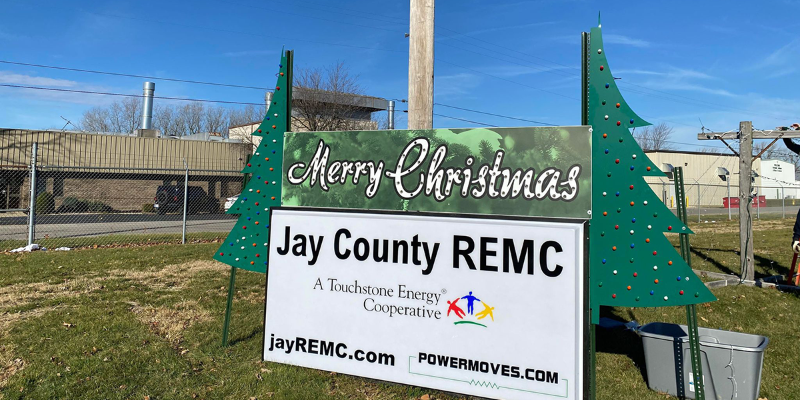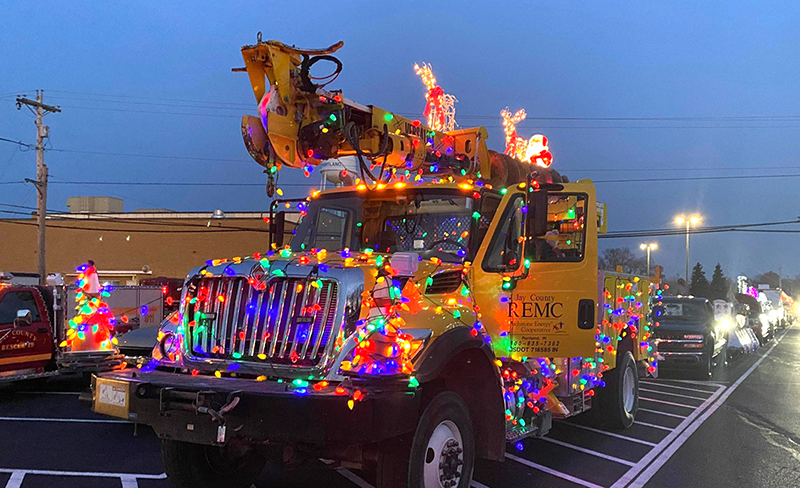Jay County REMC Becomes Latest CFC 100% Borrower

CFC’s latest 100% borrower is Jay County Rural Electric Membership Corporation (REMC), an Indiana-based distribution cooperative that values the wide range of resources and support CFC offers to members.
Headquartered in Portland, Indiana, Jay County REMC serves approximately 5,400 meters that are mainly residential and small farm accounts. Kilowatt-hour sales are about 50% residential and small farm, 25% large power agricultural and 25% from a large ethanol plant.
“The population of our territory has been shrinking for more than a decade as farms consolidate,” Jay County REMC President and CEO Neil Draper said. “But we have seen a large amount of agricultural growth over the last few years that has led to increased power sales and some new job opportunities for our members.”
The cooperative gets its power from its generation and transmission cooperative, Wabash Valley Power Alliance (WVPA), which helps Jay County REMC control its costs.
“Our relationship with WVPA helps our members immensely,” Draper said. “Because WVPA purchases power for a large number of cooperatives, our wholesale rates are lower than we could purchase on our own due to their economies of scale. Additionally, being a small cooperative, we often struggle with providing ancillary services to our members, as it doesn’t always make sense to employ or own dedicated resources. So, we rely on WVPA for a great deal of marketing, engineering, information technology and other technical resources.”
Investing in Capital Projects
Like many cooperatives, Jay County REMC has experienced cost pressures, but is moving ahead with important capital projects.
“WVPA has done a good job keeping our power supply costs down considering the recent market challenges,” Draper said. “However, material costs have increased dramatically. On average, our material costs are 50% higher than they were just two years ago. We’ve had to tighten our budget, but thus far we’ve been able to absorb these costs without material impacts to our membership.”
One area of investment that has helped improve efficiency and control costs is advanced metering infrastructure (AMI).
“We do have a very well-equipped AMI system,” Draper said. “Our meters offer a great deal of data that we can use to create load models to improve system engineering and proactively replace infrastructure to reduce future costs and reduce line losses where appropriate.”
One safety feature the cooperative utilizes regularly is checking the internal temperature of each meter through the AMI system. This allows Jay County REMC to find hot spots and overload conditions before damage occurs. This feature has helped avoid numerous issues in the last few years that likely would have resulted in damage to cooperative and/or member equipment.
“We’re currently working on more engineering and meter data management tools using our AMI system,” Draper added. “We’ve recently made the investment to create a digital map, including an electrical model, that will allow work plan designs that greatly enhance our ability to design our system to member needs without overspending.”
The cooperative is also in the process of designing and building a new substation, which will be their first new substation in nearly 20 years.
“We are also in the early planning stages of a new headquarters building,” Draper said. “This will require special financing as we work to create the best loan structure for our project.”

CFC Provides More Than Just Loans
Jay County REMC became a 100% CFC borrower when they decided to early terminate loans with other lenders without significant penalty.
“With the CFC 100% borrower discount, we were able to justify early payment of those loans,” Draper said. “CFC has always been a trusted resource for us, and has assisted us in many projects over the years. We believe CFC best aligns with our needs—even beyond our borrowing needs—so it just made sense to work toward 100% borrower status.”
Jay County REMC has found CFC’s consulting services—like strategic planning, equity management planning and financial forecasting—to be very valuable.
“We completed strategic planning with CFC in 2021, and are currently finishing up a rate design and cost-of-service study,” Draper said. “These projects have helped us a great deal in creating vision for our cooperative, and with the rate study, we’ll be able to make strategic rate changes to better align our rates to member needs. We will likely begin a new strategic plan in the next year, and will also seek CFC guidance for financial forecasting.”
Draper added, “Our CFC RVP also has been an extremely beneficial resource. He has helped prove—time and time again—that CFC is not just a lender. To us, CFC is a diverse financial resource that also happens to finance projects.”